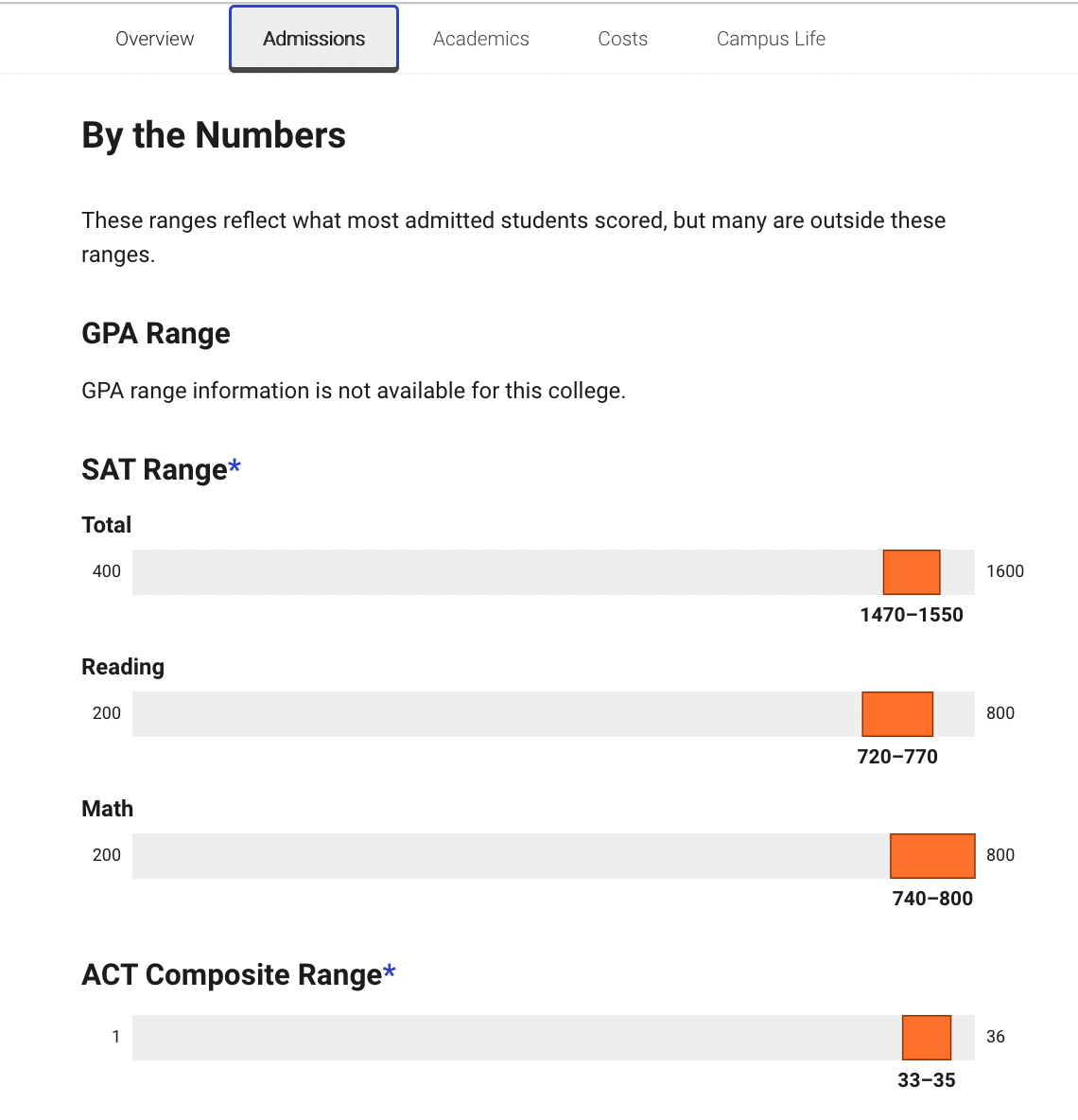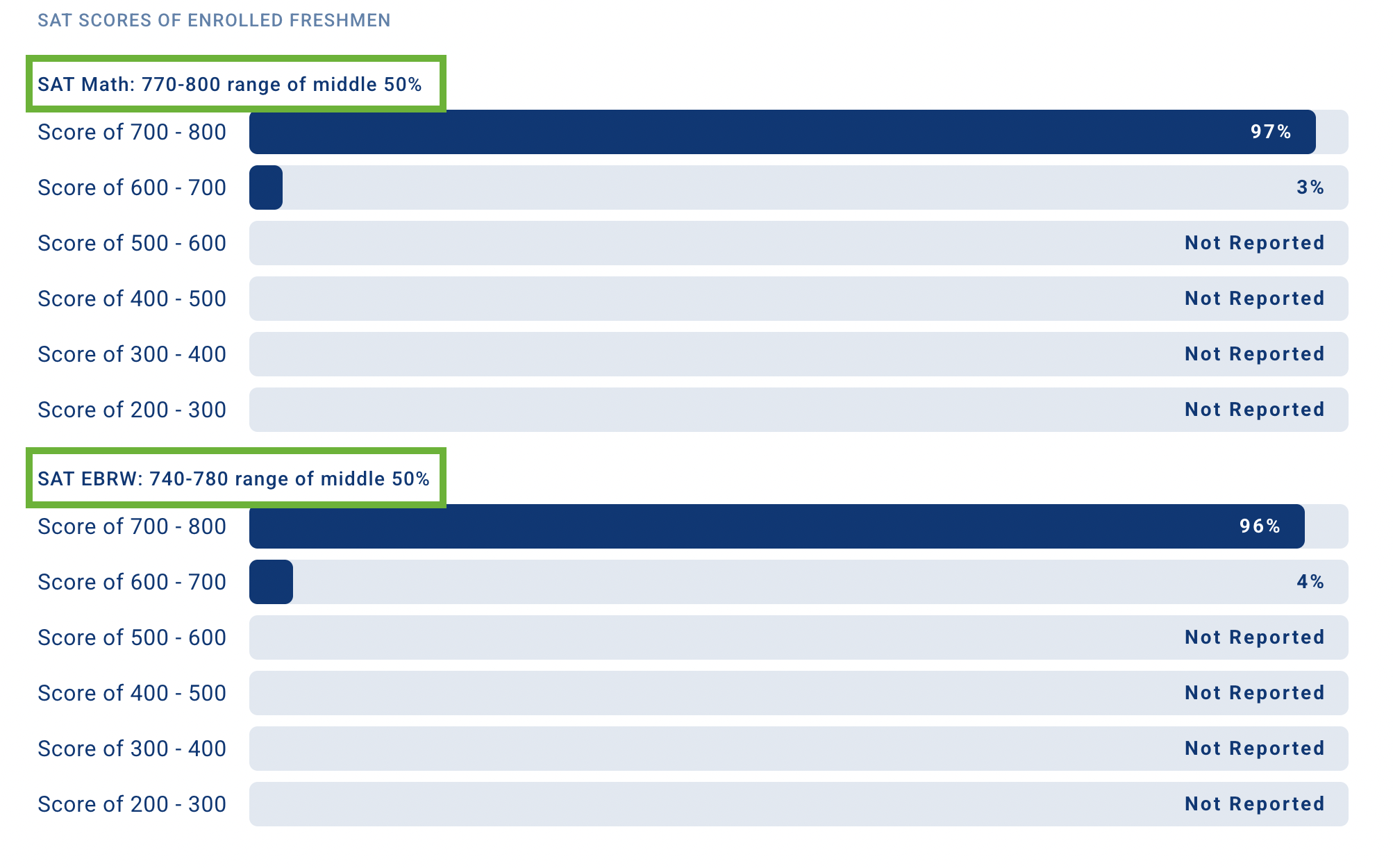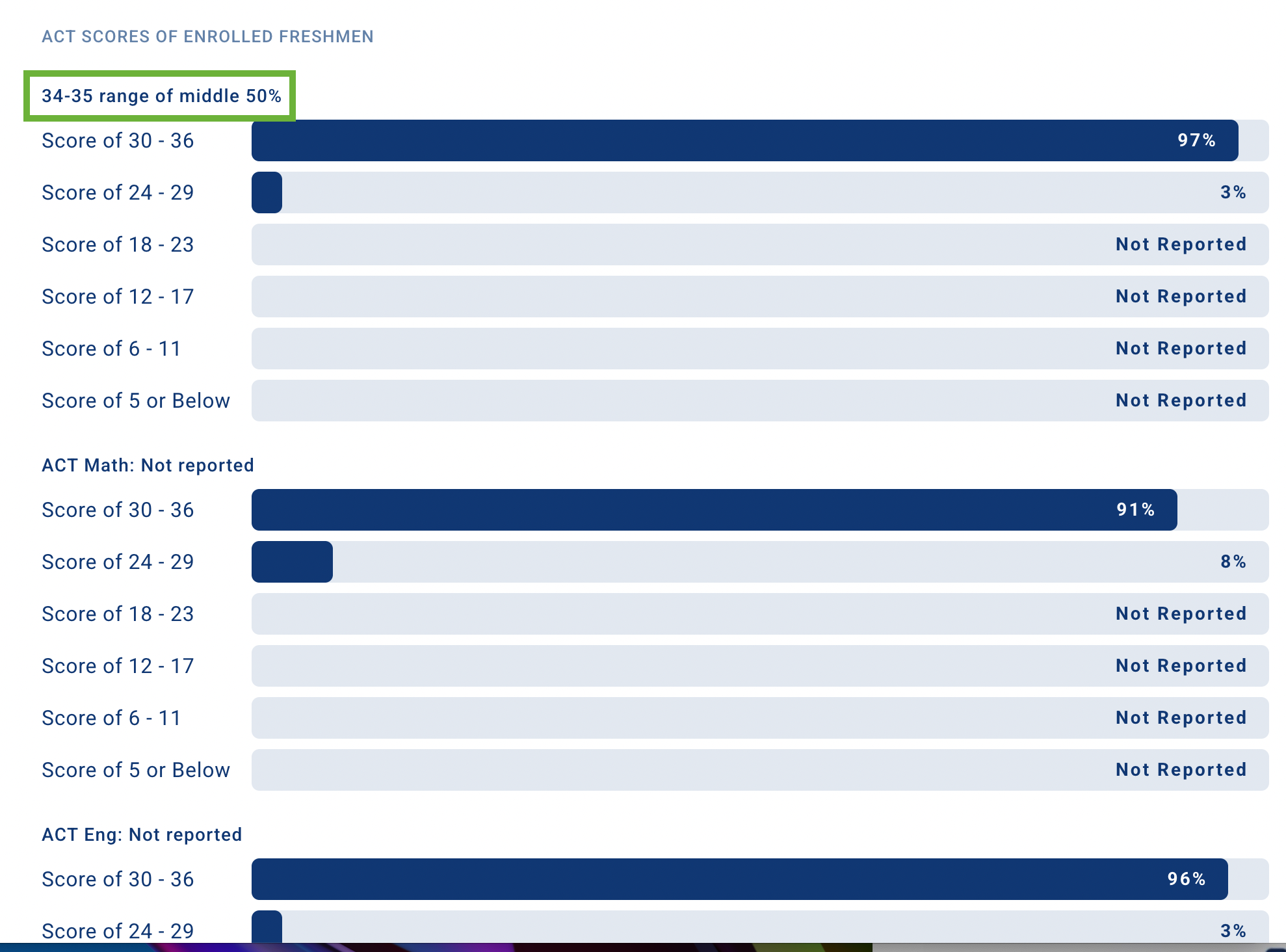In 2020, due to the extraordinary circumstances of the COVID pandemic, two-thirds of four-year institutions of higher education temporarily adopted test optional or test blind policies. Although many colleges have since switched back to requiring testing—Dartmouth, MIT, Brown, Harvard and Yale led the trend a few years ago—there’s still a handful of schools, in 2025, that have stuck to a test optional approach.
However! As I’ve pointed out elsewhere, even for those colleges that don’t require ACT or SAT test scores, you MAY still improve your chances by submitting them along with your application. After all, doing more than the bare minimum is usually a good thing, right? For that reason, many of you have proceeded to take the SAT and/or the ACT. But once you’ve gotten those scores back…how can you be sure it’s advantageous to actually send them? How high does your score need to be to actually serve as an asset to your application, rather than a hindrance?
So, this post right here is going to help you figure out whether you should submit your SAT or ACT test scores—or if you should take a school up on its Test Optional policy. I have three strategies for calculating this.
By the way: it might be best to research a given college’s scores with ALL three of the research options outlined below. This is in part because CollegeBoard has changed the wording on its website to avoid explicitly stating that the test score numbers it’s providing are specifically “median” ranges. If you get conflicting data, go with the ranges that the majority of the below websites show you!
Article Contents
B. How to figure out if you should send scores to a test-optional school
C. Conclusion
Watch this post as a video:
Calculating if you should send scores to a test-optional school
Before we dive in, I want to point out that there are never hard-and-fast guarantees when it comes to college admissions and test scores. I cannot promise you that a SAT score of XXXX will get you into the University of ABC. That’s because there’s WAY more to your application than just the specific facts of grades and scores. However, these rough guidelines will help you narrow your field from “random guess” to “educated projection”…which will gain you way more clarity and confidence in deciding whether to send your scores.
Now, let’s get started with method #1.
1. Using CollegeBoard.org to Find out about Test-Optional Scores
The College Board’s site can be tricky to navigate, and a lot of its most potent tools are not easy to find. That’s why it’s important to have someone show you exactly how to use it to get the crucial info you’re looking for. (I walk you through this in the video companion to this article, but you can just keep reading here if you’d prefer a tutorial using static screenshots + text.)
In the upper right corner of the CollegeBoard.org website is a search field. In the screenshot below, I’ve highlighted it in a green box. You’re going to enter the name of the college you’re trying to research into this field. (You do not need to sign in to access this info.)
A set of search results will come up, and you’ll click on the name of your target college (typically the first result). This will bring you to the CollegeBoard info page for that particular school. Click on the tab labeled “Admissions” and scroll down to “By the Numbers.”
Here, you’ll see ranges of SAT and ACT scores. (And just under those ranges for total scores, you’ll see SAT score ranges for each section of the test. That feature is not available for the ACT on this site.)
Previously, the College Board had explicitly called these score ranges the median 50% of admitted students’ scores, but they have now changed their wording to say they're the score ranges of “most students” at that institution. That said, I’ve crunched these numbers on my own and determined that they tend to sync up decently well with other sources' median 50%. Technically, the College Board range tends to be a bit wider than a true median 50%—specifically, it tends to give more room at the bottom. That said, we can still go about using this data the same way.
Now here’s what you DO with this information. If you look at the example above, a little more than half of last year’s incoming freshmen scored between 1470-1550 on their SATs. That means a sizable number (roughly one-fourth or 25%) of the matriculating class scored ABOVE 1550…and also that roughly 25% scored BELOW 1470.
KRISTINA’S ADVICE: if YOUR SCORES FALL within this (ROUGHLY) median 50% range or ABOVE it, YOU SHOULD SUBMIT YOUR test scores WITH YOUR application.
In this example, if I were applying to this particular school, and I scored 1470 or higher on my SAT, I’d go ahead and send my score with the rest of my application, even if this school were test optional.
Here’s where it gets tricky: if you scored BELOW 1470, I’d PROBABLY RECOMMEND NOT sendING in YOUR score TO THIS SCHOOL.
Now, if you scored just a tiny bit below the lower end of that range, like 1460, it might not damage your application to include your scores. But if your score was closer to 1350? Then it’s probably not doing you any favors to include your test score. In that case, I recommend taking the school up on its test optional policy…and not submitting your score.
2. Deciding Whether to Send Test Optional Scores with CollegeData.com
Fortunately, this website makes for easier navigating than CollegeBoard.org.
The first thing you’ll see is a big search field in the middle of the screen that says “Enter College Name.” Once you type in and click on the name of the college you’re interested in, the first page you’ll see is the “Admissions” section. Scroll down (for a while!) to “SAT Scores of Enrolled Freshmen” and you’ll see the middle 50% of SAT test scores for last year’s freshman class:
And below that, you’ll see the numbers for the ACT. (Note that CollegeData gives us a bit more info about individual ACT sections than CollegeBoard did—though just for Math and English, not for Science and Reading; plus, no median scores are provided for any ACT sections.)
For the example we’re diving into here, half of the college’s incoming freshman scored between a 34-35 on the ACT (highlighted in the green box in the screenshot above) or between a 1510-1580 on the SAT. (You compute that range by adding the lower SAT Math score with the lower SAT EBRW score for the lower total, and adding the higher scores for each Math and EBRW for the upper total. Yes, this IS an assumption, as we do not know that a person scoring near the top on Math would definitely ALSO score near the top in Verbal, and vice-versa, but for our purposes here, this is fine.)
We’ll take the same approach here as we did when we were using CollegeBoard: if you scored within that range or ABOVE it, definitely send in your ACT or SAT test scores!
If you’re quite close (33 on the ACT or 1490-1500 on the SAT) you can consider submitting your scores.
However, are you considerably BELOW that middle score range? Then your score is probably not going to improve your application. Let the college review your application without a test score.
3. How to Find Median SAT and ACT Scores on Naviance
If your high school uses the program called Naviance (or a similar option, like SCOIR or Capterra), then rejoice—for you have access to a THIRD set of info for calculating whether you should submit your test scores to a test-optional school!
Naviance and its kin collect the college application data—test scores, grades, student résumés, recommendation letters, and extracurriculars—of other people from your high school who have applied to a given college. Handy, huh?
Log in to Family Connection by Naviance. Select the “Colleges” tab. Then, in the “College Research” section of the page, select “Scattergrams.” This will show you a graph of the application outcomes (i.e. rejections vs. acceptances) of students from your specific high school who have applied to that college in years past.
This sample Naviance scattergram plots students from a particular high school who applied to and got an admissions decision from a particular college. The graph shows the grade-point average (on the vertical y-axis) vs. the SAT scores (on the horizontal x-axis). If you see a green check mark, that signifies a student with the corresponding GPA and score who got accepted. A red “X” signals the GPA-score combo of a student who was rejected.
As you can see from the scattergram above, there are no objective guarantees about a certain GPA-test score combo that will always open the doors to a given college. (There’s a lot we don’t know about the applicants that make up this dataset: which major were they applying to? how strong was their personal statement? etc.)
However, there usually ARE some clear trends. Basically, if you look at the dotted lines that form a rectangle, you’ll see that its borders correspond to a GPA of 3.50 and an SAT score of roughly 1320. There tend to be mostly green check marks OUTSIDE the rectangle (i.e. GPA higher than 3.50 and/or SAT score higher than 1320), but mostly red X’s INSIDE the rectangle (i.e. GPA LOWER than 3.50 AND SAT score LOWER than 1320).
So your takeaway is: if you’re applying to a Test Optional school this year, look up the scattergram for those college(s) of interest on your school’s Naviance site. If your scores fall OUTSIDE that dotted-line box, go ahead and send them! However, if you are clearly INSIDE the box, surrounded by red X’s, your SAT or ACT score will likely not improve your admissions profile, and you shouldn’t send them in.
Conclusion
There you have it: three great ways to make an informed decision about whether to submit your SAT or ACT scores to test-optional colleges!
As I mentioned in the intro to this post, what I’ve covered today have been general principles, not custom advice that takes into account your unique scores, GPA, qualities, and achievements. Nonetheless, I hope these tools help you make a more accurate decision about this multifaceted question.
If you ARE in the market for a specific-to-you strategy—either for your application as a whole, or for a piece of it, like SAT scores or your main essay—you can learn more about how I work with students one-on-one to get them into their dream schools here.










